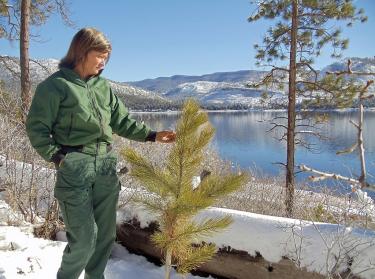Protecting Your Woods from Windstorms
Letting young trees sway in the wind can help them adjust.
What can you do as a woodland owner to prepare your forest for a windstorm’s fury? A lot, it turns out. These simple steps can go a long way toward building resilience and wind-resistance in your woods:
- Increasing diversity. Because trees of different species and ages have different wind firmnesses, having a mix of trees will boost your forest’s overall ability to withstand wind damage. Planting more wind-resistant species—which include baldcypress and live oak—and keeping a blend of strong older trees and more flexible younger ones in your woods will increase your forest’s resilience.
- Letting them go with the flow. Staking or bracing young trees so tightly that they can’t bend and sway with the wind as they grow will leave them at a disadvantage later on. Trees gain wind firmness by moving with the wind and adjusting to it over time. To encourage your trees’ natural resilience, keep ties loose and remove all tree support after 5 to 7 years.
- Keeping stands thin. Although thinning exposes trees to more wind damage in the short term, it makes for stronger, healthier and more resilient trees in the long term. With your forester’s help, develop a plan for frequent, careful tree thinning that will improve the health of all your trees.
- Monitor and address health problems early. Healthier trees will bounce back more quickly from whatever Nature throws their way. Watch for and treat signs of pest infestation and disease early on to give your trees their best chance at survival.
For more on windstorms and where to get professional help, go to our Windstorm Resources Guide.
Previous page
Next page
How can I get more tips?
It’s simple! Enter your email below.

